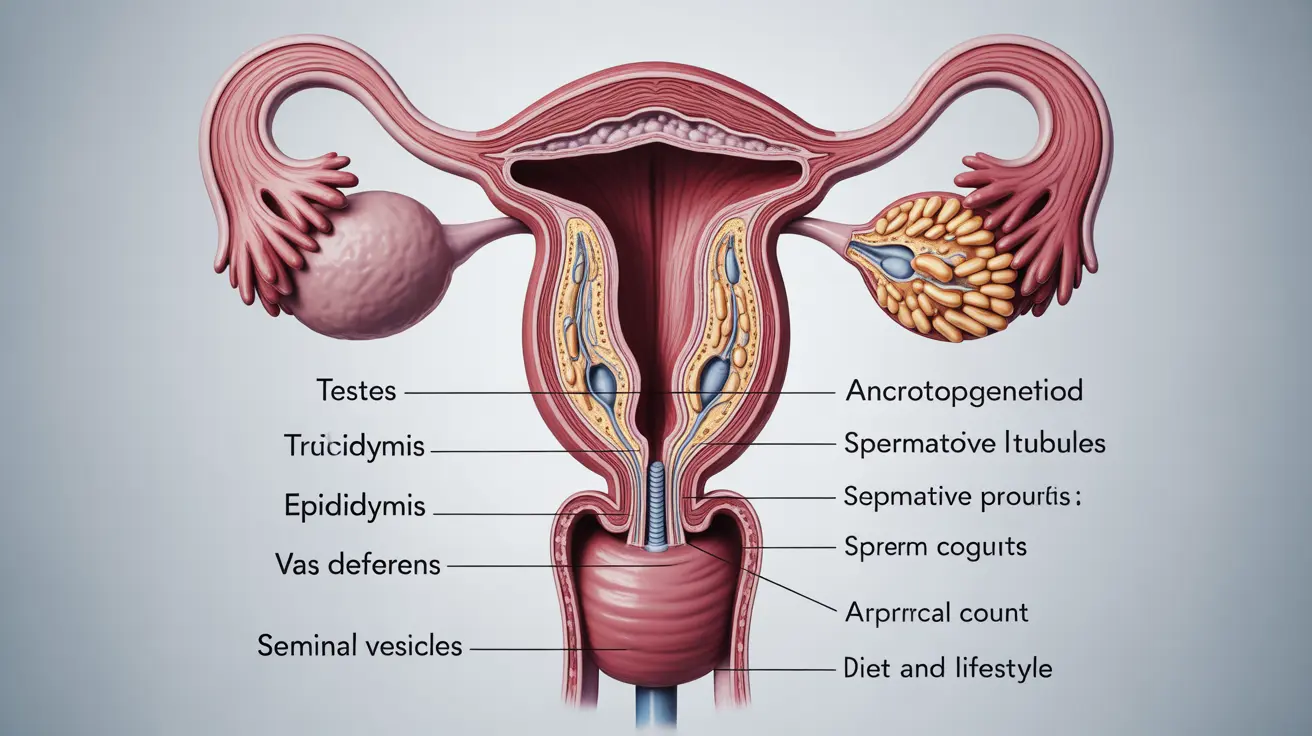Oligospermia, a condition characterized by a lower-than-normal sperm count, can significantly impact male fertility and reproductive health. While this condition presents challenges for men trying to conceive, understanding its causes, symptoms, and available treatments can help guide effective management strategies and improve outcomes.
This comprehensive guide explores the various aspects of oligospermia, from its underlying causes to treatment options, helping you better understand this common fertility concern and the steps you can take to address it.
What is Oligospermia?
Oligospermia occurs when a man's ejaculate contains fewer sperm than what's considered normal. According to medical standards, a normal sperm count ranges from 15 million to over 200 million sperm per milliliter of semen. When the count falls below 15 million per milliliter, doctors diagnose oligospermia.
Common Causes of Oligospermia
Lifestyle Factors
Several everyday habits and environmental factors can contribute to reduced sperm count:
- Smoking and excessive alcohol consumption
- Extended exposure to high temperatures
- Certain medications
- Poor diet and obesity
- Prolonged sitting or tight clothing
Medical Conditions
Various health conditions may lead to oligospermia:
- Varicocele (enlarged testicular veins)
- Hormonal imbalances
- Genetic factors
- Infections affecting the reproductive tract
- Certain autoimmune disorders
Diagnosis Process
Diagnosing oligospermia typically involves several steps and tests:
Initial Evaluation
The process usually begins with a comprehensive medical history review and physical examination. Your healthcare provider will discuss your lifestyle, medical background, and any fertility concerns.
Semen Analysis
The primary diagnostic tool for oligospermia is a semen analysis, which evaluates:
- Sperm count
- Sperm motility
- Sperm morphology
- Semen volume and quality
Treatment Approaches
Medical Interventions
Treatment options often depend on the underlying cause and may include:
- Hormone therapy
- Surgical procedures for structural issues
- Medication adjustments if current prescriptions are affecting fertility
- Treatment of underlying infections or medical conditions
Natural Methods and Lifestyle Changes
Several lifestyle modifications can help improve sperm count:
- Maintaining a healthy weight
- Regular exercise
- Stress management
- Proper nutrition
- Avoiding excessive heat exposure
- Limiting alcohol and quitting smoking
Prevention Strategies
While not all causes of oligospermia are preventable, certain measures can help maintain healthy sperm production:
- Regular exercise and maintaining a healthy weight
- Eating a balanced diet rich in antioxidants
- Avoiding harmful environmental exposures
- Managing stress effectively
- Regular health check-ups
Frequently Asked Questions
What are the common causes of oligospermia and how do they affect sperm count? Oligospermia can be caused by various factors including lifestyle choices (smoking, alcohol, poor diet), medical conditions (varicocele, hormonal imbalances), and environmental factors (exposure to toxins, excessive heat). These factors can directly impact sperm production in the testicles or interfere with hormonal regulation necessary for healthy sperm development.
What symptoms might indicate oligospermia besides difficulty conceiving? Besides fertility issues, oligospermia often has no obvious symptoms. However, some men might experience signs of underlying conditions causing oligospermia, such as swelling or pain in the testicle area, decreased facial or body hair, or sexual function changes.
How is oligospermia diagnosed and what tests are involved? Diagnosis primarily involves semen analysis, which measures sperm count, motility, and morphology. Additional tests may include hormone level testing, genetic testing, and physical examination to identify underlying causes.
What treatment options are available to improve sperm count in men with oligospermia? Treatment options include addressing underlying medical conditions, hormone therapy, surgical procedures for structural issues, and medication adjustments. Assisted reproductive technologies might also be recommended in some cases.
Can lifestyle changes help increase sperm count and reduce the risk of oligospermia? Yes, lifestyle modifications can significantly impact sperm count. These include maintaining a healthy weight, regular exercise, proper nutrition, stress management, avoiding excessive heat exposure, and limiting alcohol consumption and smoking.




